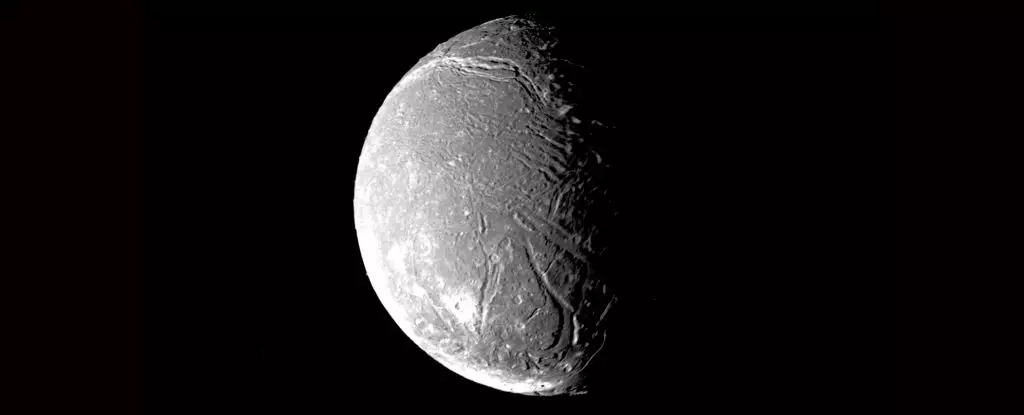The exploration of outer space has always captivated humanity, with every new discovery shedding light on cosmic enigmas. Among these mysteries are the celestial bodies orbiting the gas giants, particularly the intriguing moons of Uranus. Ariel, the fourth largest moon of this distant planet, has recently piqued the interest of scientists for its potential hidden oceans and enigmatic surface features. In this article, we will delve into the unique geological characteristics of Ariel, the possible presence of subsurface oceans, and the implications of these findings for future exploration.
Ariel’s surface is a battleground of geological forces, showcasing deep chasms that are thought to reveal insights into the moon’s internal structure. The existence of parallel grooves at the bottoms of these trenches suggests that some processes took place beneath, possibly involving the movement of material from deeper layers to the surface. The precise workings of these geological phenomena remain under investigation, but they hint at a dynamic history associated with tectonic and potentially volcanic activity.
Planetary geologists, led by Chloe Beddingfield from the Johns Hopkins University Applied Physics Laboratory, have advanced theories suggesting that Ariel’s grooves might resemble processes observed on Earth, specifically a mechanism known as “spreading.” In this context, spreading refers to the way tectonic plates split apart, allowing magma to rise and create new crust. If similar movements occur on Ariel, warmer materials from below could be forcing their way upward, leading to the formation of the chasms we observe today.
One of the most tantalizing possibilities concerning Ariel is the potential presence of liquid oceans locked beneath its icy crust. The gravitational interactions between the moons of Uranus may induce internal heating through a phenomenon called orbital resonance. This gravitational interplay could provide enough energy to sustain liquid water, which is essential for life as we know it. Excitingly, recent observations from the James Webb Space Telescope appear to support the notion of a hidden ocean within Ariel, although the specifics regarding its size and depth remain elusive.
The implications of such an ocean are profound. If Ariel does indeed harbor a subsurface ocean, it could help explain the deposits of carbon dioxide ice observed on the moon’s surface. Understanding whether these icy deposits are linked to the geological actions of Ariel—or if they arise from the ocean’s interactions with its icy shell—is crucial for piecing together the moon’s history. However, existing research has yet to definitively establish these connections, primarily due to the limitations of past exploration missions like Voyager 2, which lacked the necessary instruments for detailed analysis.
As we develop an enhanced understanding of Ariel, it becomes clear that future missions to Uranus and its moons are urgently needed. The mysteries surrounding the moon’s geological features and the potential for subsurface oceans must be critically investigated. Not only could these explorations provide vital information about the moon itself, but they could also broaden our understanding of icy bodies in our solar system and their inclination towards harboring life.
With advancements in technology and an increasing interest in planetary exploration, space agencies should prioritize missions specifically aimed at unraveling Ariel’s secrets. From investigating the frost-covered surface to drilling for samples beneath its icy shell, these future endeavors hold the potential to redefine our understanding of Ariel and the nature of its hidden oceans.
The excitement surrounding aerial investigations is palpable. As scientists piece together the moon’s narrative, the call for dedicated missions to Uranus has grown increasingly urgent. The tantalizing prospect of studying Ariel’s geological features can enlighten our comprehension of these freeze-locked worlds. The adventures of discovering whether any microbial life could endure within the depths of a frigid ocean present profound implications and fuel continued interest in planetary science.
The scientific community stands at a crossroads where the mysteries of Ariel are poised to be unraveled. As we look to the policies and priorities of space agencies around the world, the echoes of Ariel’s intriguing grooves and the shadows of its hidden oceans compel us to act. Only through dedicated exploration can we hope to answer the questions that lie beneath the icy crust of this captivating moon. Space is not only a frontier of exploration but also a canvas of possibilities waiting to be painted with the hues of discovery.

